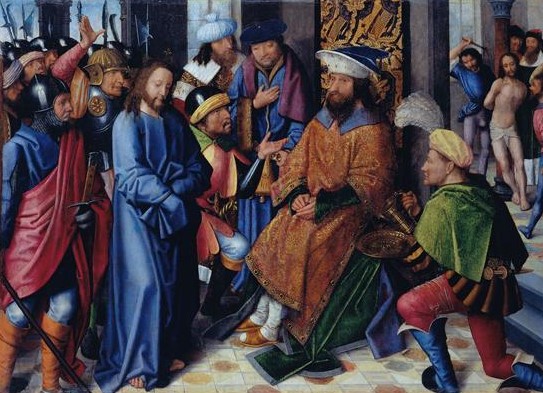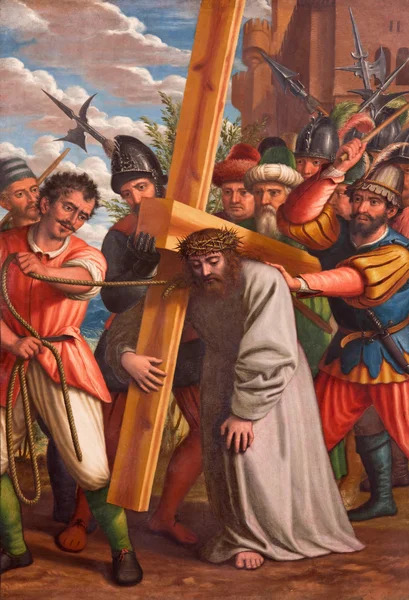Good Friday is a solemn and significant day in Christian tradition that falls on the Friday before Easter Sunday. It commemorates the crucifixion of Jesus Christ, a central event in Christian theology and the culmination of the Passion Week.
On this day, Christians reflect on the suffering and sacrifice of Jesus as he was crucified, died on the cross, and was buried in a tomb.
Good Friday is a day of solemn worship, prayer, and contemplation, reminding believers of the profound love and redemption symbolized by Jesus’ sacrifice on the cross.
It is followed by Easter Sunday, which celebrates Jesus’ resurrection and the hope it brings to Christians around the world.
| Event | Timeline |
|---|---|
| The Last Supper | Maundy Thursday evening |
| Garden of Gethsemane | Late Thursday night or early Friday morning |
| Trials before the Sanhedrin and Pilate | Early Friday morning |
| Scourging and Mockery | Friday morning |
| The Crucifixion | Friday morning |
| The Death and Burial | Friday afternoon |
| The Sabbath Rest | Friday evening to Saturday evening |
Timeline of Good Friday
1. The Last Supper (Maundy Thursday evening):
The Last Supper is a significant event that took place on the evening before Good Friday. Jesus and his disciples gathered in a room in Jerusalem to celebrate the Passover meal, which commemorated the Israelites’ liberation from slavery in Egypt.
It was during this meal that Jesus instituted the sacrament of Holy Communion or the Lord’s Supper.
During the meal, Jesus predicted his imminent betrayal by one of his disciples. He took bread, broke it, and shared it with his disciples, telling them that it represented his body.
Also Read: Facts About Good Friday
He also took a cup of wine, gave thanks, and passed it to them, saying that it symbolized his blood, which would be shed for the forgiveness of sins.
Jesus used this occasion to emphasize the importance of love and service among his followers, washing the feet of his disciples as a demonstration of humility and servitude. This act is often referred to as the “Maundy” or “command” that Jesus gave to his disciples to love one another.

2. Garden of Gethsemane (Late Thursday night or early Friday morning):
Following the Last Supper, Jesus and his disciples went to the Garden of Gethsemane, which was located at the base of the Mount of Olives, just outside Jerusalem. It was a place of prayer and reflection.
Also Read: Easter Sunday Facts
In the garden, Jesus began to experience profound anguish and sorrow. He knew that his crucifixion was imminent, and he prayed to God the Father, asking if it were possible for the cup of suffering to be taken from him. However, he also submitted to God’s will, saying, “Not my will, but yours be done.”
It was in the Garden of Gethsemane that Judas Iscariot, one of Jesus’ disciples, arrived with a group of armed men to betray Jesus. Judas identified Jesus with a kiss, leading to his arrest by the religious authorities.
3. Trials before the Sanhedrin and Pilate (Early Friday morning):
After his arrest in the Garden of Gethsemane, Jesus was taken to a series of trials. First, he was brought before the Sanhedrin, the Jewish religious council, for a preliminary hearing. There, he was accused of blasphemy and questioned about his teachings and claims.
Since the Sanhedrin did not have the authority to carry out the death penalty, Jesus was then taken to the Roman governor, Pontius Pilate. Pilate found no guilt in Jesus and sought to release him. However, the crowd, incited by religious leaders, demanded Jesus’ crucifixion.
Pilate, in an attempt to appease the crowd and maintain order, reluctantly agreed to have Jesus crucified. He symbolically washed his hands to indicate his innocence of Jesus’ bloodshed but allowed the execution to proceed.

4. Scourging and Mockery (Friday morning):
After Pontius Pilate gave his consent for Jesus to be crucified, Roman soldiers took Jesus into custody and subjected him to a brutal scourging.
This punishment involved being whipped with a multi-tailed whip, often embedded with sharp objects like shards of bone or metal, causing severe lacerations and immense pain.
The soldiers also mocked Jesus by placing a crown of thorns on his head, dressing him in a purple robe, and hailing him as the “King of the Jews” in a sarcastic and demeaning manner. They struck him and spat on him, further humiliating him.
5. The Crucifixion (Friday morning):
Jesus was led to Golgotha, also known as Calvary, where he was crucified. Crucifixion was a cruel form of execution used by the Romans, involving the victim being nailed to a wooden cross or tree.
The crucifixion of Jesus occurred at around 9 a.m. on that Friday morning. He was crucified alongside two criminals.
As he hung on the cross, Jesus endured excruciating physical and emotional suffering. He spoke several significant statements from the cross, including “Father, forgive them, for they do not know what they are doing,” and “It is finished,” signifying the completion of his redemptive mission.

6. The Death and Burial (Friday afternoon):
At around 3 p.m., darkness fell over the land, which lasted until Jesus’ death. This event is often seen as a supernatural sign of the significance of Jesus’ sacrifice.
To ensure Jesus was dead, a Roman soldier pierced his side with a spear, confirming his death. In doing so, blood and water flowed from his side.
Joseph of Arimathea, a member of the Sanhedrin and a secret disciple of Jesus, approached Pilate to request permission to bury Jesus’ body. He, along with Nicodemus, another Pharisee who followed Jesus, took Jesus’ body down from the cross.
7. The Sabbath Rest (Friday evening to Saturday evening):
After taking Jesus’ body down from the cross, it was wrapped in a linen shroud and placed in a tomb that had been cut into the rock. This was done hastily because the approaching Sabbath required no work to be done on that day.
From Friday evening to Saturday evening, which corresponds to the Jewish Sabbath, Jesus’ body remained in the tomb. During this time, his followers mourned his death and observed the Sabbath in accordance with Jewish customs.
